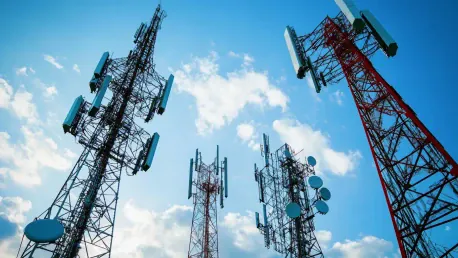The upcoming Mobile World Congress (MWC) Barcelona 2025 is set to be a pivotal event for the mobile network industry, with the O-RAN ALLIANCE showcasing 33 groundbreaking Radio Access Networks (RAN) technologies. These innovations are poised to revolutionize the way mobile networks operate, focusing on enhanced interoperability, efficiency, performance, and security. The event is expected to draw significant attention as members of the O-RAN ALLIANCE present their latest advancements, which are essential for driving the next generation of mobile network technologies.
Innovative Solutions on Display
Cutting-Edge Technologies
Participants from the O-RAN ALLIANCE will present a variety of innovative solutions that leverage the capabilities of RAN Intelligent Controllers (RICs). These technologies are designed to significantly enhance the efficiency and performance of mobile networks and adhere to the latest O-RAN specifications. The showcased solutions aim to make mobile networks more intelligent, open, virtualized, and interoperable. With the latest advancements, the industry anticipates a transformation in how mobile networks adapt to increasing demands and evolving use cases.
The solutions on display utilize RICs to dynamically manage network resources, respond to real-time conditions, and optimize overall network performance. By employing advanced algorithms and machine learning techniques, these controllers can predict network congestion, allocate resources more efficiently, and enhance the user experience. As mobile networks become more complex, the need for such intelligent management solutions becomes increasingly critical, and the O-RAN ALLIANCE is at the forefront of delivering these innovations.
Security and Interoperability
A key focus of the demonstrations will be on improving interoperability and security, which are crucial for the seamless integration and operation of mobile networks. By adhering to O-RAN specifications, the solutions ensure that different network components can work together effectively, enhancing overall network reliability and security. The commitment to standardization allows for a more cohesive and robust infrastructure, where devices from various manufacturers can function harmoniously.
Improved security measures are also vital as mobile networks become more vulnerable to sophisticated cyber threats. The showcased solutions incorporate advanced encryption protocols, anomaly detection systems, and robust authentication methods to protect against potential breaches and attacks. Ensuring the security of the network not only safeguards the data of users but also maintains the integrity of the entire system, which is indispensable for service providers and consumers alike.
AI-Driven Network Optimization
RAN Intelligent Controllers
The event will highlight how AI-driven frameworks, particularly the Near-Real-Time and Non-Real-Time RAN Intelligent Controllers (RICs), can accelerate the adoption of AI innovations in mobile networks. These controllers, running xApps or rApps, are essential for optimizing large-scale networks and ensuring efficient network operations. The integration of AI allows for real-time decision-making and adaptive responses to changing network conditions, which is crucial for maintaining high performance and reliability.
RAN Intelligent Controllers leverage AI to analyze vast amounts of data, detect patterns, and predict potential issues before they impact the network. This proactive approach ensures that the network can adapt to fluctuations in demand, mitigate congestion, and deliver consistent quality of service. Additionally, by utilizing machine learning algorithms, RICs can continually improve their performance, making the network smarter and more efficient over time.
Quantum Algorithms
Another exciting aspect is the integration of Quantum Machine Learning and Quantum-Inspired Algorithms. These advanced methods are used to estimate the quality of experience, providing a more accurate and efficient way to manage network resources and improve user experiences. Quantum algorithms can process complex computations at unprecedented speeds, enabling faster and more effective decision-making in network management.
By incorporating quantum techniques, the showcased solutions can optimize resource allocation, reduce latency, and enhance overall network performance. This level of optimization is particularly important as mobile networks support a growing number of devices and applications, each with unique requirements. The ability to dynamically adjust resources based on real-time data ensures that users receive the best possible experience, regardless of network conditions.
Enhanced Resource Management
Non-Linear Signal Processing
One of the key demonstrations will involve a non-linear signal processing framework. This framework is designed to fully exploit spatial, frequency, and time network resources, thereby optimizing network performance. Such advancements are crucial for handling the growing demands on mobile networks, as users increasingly rely on high-bandwidth applications and services.
The non-linear signal processing approach allows for more efficient utilization of available spectrum, reducing interference and maximizing throughput. By addressing the complex interactions between different network resources, the framework ensures that signals are transmitted and received with minimal distortion and delay. This results in higher quality connections and more reliable service, which is essential for both consumers and businesses.
Hierarchical Operations
The hierarchical operation of apps and RICs will also be showcased, essential for the global orchestration of both terrestrial and non-terrestrial network operations. This approach ensures that networks can operate efficiently on a large scale, coordinating resources across multiple layers to deliver optimal performance. Hierarchical operations allow for a more structured and organized management of network resources, enabling service providers to handle the increasing complexity of modern mobile networks.
By implementing a hierarchical structure, networks can achieve greater scalability and flexibility, adapting to varying levels of demand and different service requirements. This is particularly important for supporting emerging technologies such as 5G and beyond, which will require more sophisticated management techniques to deliver their full potential. The ability to efficiently orchestrate resources across multiple domains ensures that users receive a consistent and high-quality experience, regardless of their location or device.
Interactive and Virtual Exhibitions
MWC Barcelona 2025 Map
To help attendees navigate the exhibition, the O-RAN ALLIANCE has created an interactive map highlighting the 28 O-RAN showcases. This tool will be invaluable for visitors looking to explore the innovative solutions on display. The interactive map not only provides detailed information about the locations of various booths but also offers insights into the technologies being presented, allowing attendees to plan their visit more effectively.
The map is designed to enhance the overall experience of the event, making it easier for visitors to find and engage with the demonstrations that interest them the most. By providing a user-friendly and informative guide, the O-RAN ALLIANCE ensures that attendees can make the most of their time at the exhibition, discovering the latest advancements in RAN technology and networking with industry leaders.
Virtual Exhibition
In addition to the physical exhibition, the O-RAN Virtual Exhibition will be launched at the start of MWC. This virtual platform will feature many of the demos, along with five virtual-only demonstrations, providing a comprehensive view of the advancements in RAN technology. The virtual exhibition allows a broader audience to access and engage with the showcased solutions, regardless of their geographical location.
The virtual platform is designed to offer an interactive and immersive experience, with detailed presentations, videos, and live demonstrations. Attendees can explore the latest innovations, ask questions, and connect with experts in real-time, creating a dynamic and engaging environment. The inclusion of virtual-only demonstrations ensures that the exhibition remains accessible and relevant, catering to the needs of a diverse and global audience.
Industry Consensus on Open RAN
Vendor Participation
A diverse set of vendors and research institutions, including Accelleran NV, Accuver, Analog Devices, and many others, will deliver the showcases. Their participation underscores the collaborative effort within the industry to advance RAN technology. By bringing together a wide range of expertise and perspectives, the O-RAN ALLIANCE fosters a competitive and innovative environment, driving the development of cutting-edge solutions.
The involvement of multiple vendors ensures that the showcased technologies are robust, interoperable, and capable of meeting the diverse needs of the mobile network industry. This collaborative approach also promotes the sharing of knowledge and best practices, leading to more effective and efficient solutions. The diverse participation highlights the industry’s commitment to working together to achieve the common goal of advancing RAN technology.
Maturing Technology
The upcoming Mobile World Congress (MWC) in Barcelona for 2025 promises to be a landmark event for the mobile network industry. This year, the spotlight will be on the O-RAN ALLIANCE as it unveils 33 groundbreaking Radio Access Network (RAN) technologies. These cutting-edge innovations are set to transform mobile network operations by enhancing interoperability, boosting efficiency, improving performance, and strengthening security.
The MWC Barcelona 2025 is anticipated to attract a lot of attention, especially from industry professionals and technology enthusiasts. With members of the O-RAN ALLIANCE showcasing their latest advancements, this event is critical for driving the evolution of next-generation mobile network technologies. These developments are not just incremental changes; they’re poised to redefine standards and expectations within the industry, paving the way for future innovations in mobile communication.









